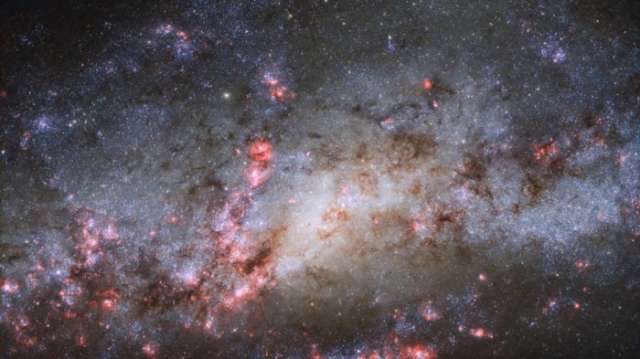While gravity is a weak force for small objects, it creates a powerful attraction between massive structures like galaxies. In NGC 4490's case, the smaller galaxy NGC 4485 was drawn in by gravity, moving and colliding through its larger neighbor and altering the properties of them both, according to Hubble's image caption. The impact from the smaller galaxy stretched out the bigger galaxy, which only has a few remaining signs of its former spiral shape, like the curved arm that connects it with the smaller NGC 4485.
Both galaxies are collectively known as system Arp 269, located in the constellation Canes Venatici, or the Hunting Dogs.
According to the caption, the bright-pink colors throughout the Hubble image are active regions where stars are forming. The galactic impact dislodged gas and dust, which are reassembling as the two galaxies are about 24,000 light years apart from each other. The collision produced ripples packed with dense areas, which are prime for star creation. Clouds of ionized hydrogen are so dense, they radiate a pink glow as they're lit by the more fully formed young stars nearby.
NGC 4490 is called a starburst galaxy because it is brimming with stellar birth. However, it is also full of supernovas, the dramatic explosions caused by the death of stars. Several supernovas have been spotted within the Cocoon galaxy in the last few decades, in 1982 and 2008, officials wrote in the caption.
In billions of years, it's likely NGC 4490 and NGC 4485 will tug one another with their gravitational forces and collide once again.
More about: #Galaxies
















































